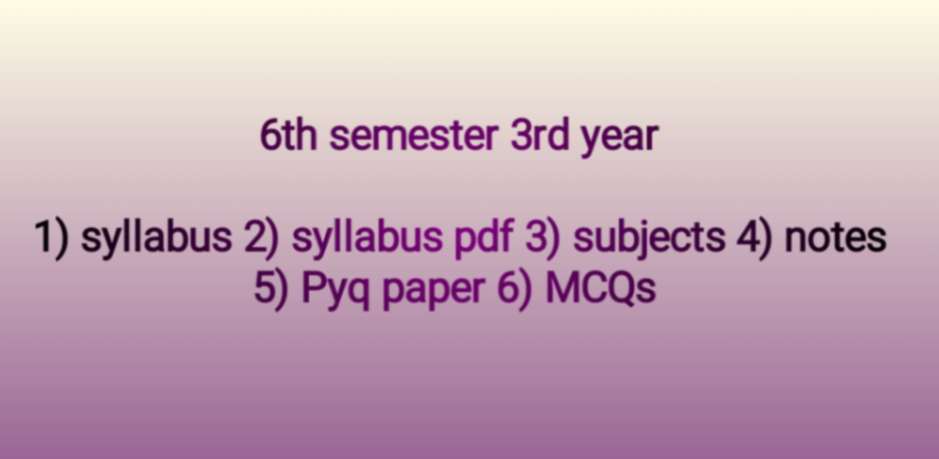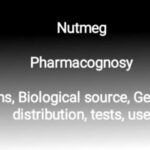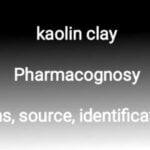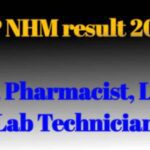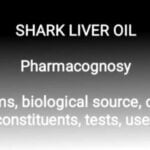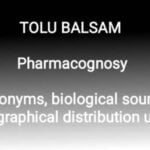6th sem b pharm – b pharmacy 6th semester syllabus – b pharmacy 6th semester notes pdf
Welcome friends, 6th semester, 3rd year semester you pass, the number of practicals also decreases. So in this article, you will learn about the 6th semester. This article includes 1) syllabus 2) syllabus pdf 3) subjects 4) notes 5) Pyq paper 6) MCQs continue reading.
b pharmacy 6th semester syllabus

Syllabus:
BP601t MEDICINAL CHEMISTRY III (Theory)
UNIT I :
Below given are the important topics for med chem unit 1
- Antibiotics nomenclature
- stereochemistry
- structure-activity relationship
- chemical degradation classification
- Lactam antibiotics: penicillin, cephalosporins, lactamase inhibitors, and monobactams
- Aminoglycosides: Streptomycin, Neomycin, Kanamycin Tetracyclines: tetracycline, oxytetracycline, chlortetracycline, minocycline, and doxycycline.
Unit II: 10 Hours : Antibiotics: History , Nomenclature, Stereochemistry, Structure Activity, Chemical Degradation Classification, and Important Products Macrolide: Erythromycin, Clarithromycin, and Azithromycin Miscellaneous: chloramphenicol*, clindamycin. Prodrugs: Basic concepts and application of prodrug design Antimalarials: Aetiology of MalariaQuinolines: SAR, quinine sulphate, chloroquine*, amodiaquine, primaquine phosphate, pamaquine*, quinacrine hydrochloride, nd mefloquine. Biguanides and dihydrotriazines: cycloguanil pamoate, proguanil Miscellaneous: Pyrimethamine, Artesunete, Artemether, Atovoquone.
UNIT III: 10 Hours Anti-tubercular Agents: Synthetic anti-tubercular agents: Isoniozid*, Ethionamide, Ethambutol,Pyrazinamide, Para-Amino Salicylic Acid* Anti-tubercular antibiotics: rifampicin, rifabutin, and cyclosporine Streptomycine and capreomycin sulphate Urinary tract anti-infective agents Quinolones: SAR of quinolones, Nalidixic Acid,Norfloxacin, Enoxacin, Ciprofloxacin*, Ofloxacin, Lomefloxacin, Sparfloxacin, Gatifloxacin, Moxifloxacin Miscellaneous: furazolidine, nitrofurantoin*, and methanamine. Antiviral agents: Amantadine hydrochloride, Rimantadine hydrochloride, and Idoxuridine Trifluoride, Acyclovir*, Gancyclovir, Zidovudine, Didanosine, Zalcitabine, Lamivudine, Loviride, Delavirding, Ribavirin, Saquinavir, Indinavir, Ritonavir.
UNIT IV: 08 Hours Antifungal agents: Antifungal antibiotics: amphotericin-B, nystatin, natamycin, and griseofulvin Synthetic antifungal agents: Clotrimazole, Econazole, Butoconazole, Oxiconazole Tioconozole, Miconazole*, Ketoconazole, Terconazole, Itraconazole, fluconazole, naftifine hydrochloride, and tolnaftate* Anti-protozoal Agents: Metronidazole*, Tinidazole, Ornidazole, Diloxanide, Iodoquinol, Pentamidine Isethionate, Atovaquone, and Eflornithine Anthelmintics: Diethylcarbamazine citrate*, Thiabendazole, Mebendaz Sulphonamides and sulfones Historical development, chemistry, classification, and SAR of sulfonamides: Sulphamethizole, Sulfisoxazole, Sulphamethizine, Sulfacetamide*, Sulfapyridine, sulfamethoxaole*, sulphadiazine, mefenide acetate, and sulfasalazine Folate reductase inhibitors: trimethoprim*, cotrimoxazole Sulfones: Dapsone*.
UNIT-V 07 Hours Introduction to Drug Design Various approaches are used in drug design. Physicochemical parameters used in quantitative structure activity Relationship (QSAR) such as partition coefficient, Hammet’s electronic Parameter, Taft’s steric parameter, and Hansch analysis. Pharmacophore modelling and docking techniques Combinatorial Chemistry: Concepts and Applications Chemistry: solid-phase and solution-phase synthesis Of combinatorial.
BP607P MEDICINAL CHEMISTRY- III (Practical)
There are total 1 – 15 experiments
PHARMACOLOGY-III (Theory) BP602
UNIT-I: 45 hours; 10 hours 1. Drugs’ pharmacological actions on the respiratory system Anti-asthmatic medications b. Medication used to treat COPD c. Antitussives and expectorants Decongestants for the nose c. Stimulants for the lungs 2. Pharmacology of medications that affect the GI tract Antiulcer medications. a. Constipation and diarrhoea medications. C. Substances that increase and decrease hunger. d. Carminatives and digestives. e. Anti-emetics and emetics.
10 hours for UNIT-II : Chemotherapy a. Basic chemotherapeutic concepts. B. Cotrimoxazole and sulfonamides. b. Antibiotics: macrolides, chloramphenicol, penicillins, and cephalosporins Tetracycline, aminoglycosides, fluoroquinolins, and quinolones.
10 hours for UNIT-III Chemotherapy 3. Antitubercular medications Antileprotic drugs Antifungal medications Antiviral medications e.Anthelmintics f. Malaria medications f. Antiamebic medications .
UNIT-IV Chemotherapy : Infections of the urinary tract
Unit V toxicology
BP 608 p PHARMACOLOGY-III (Practical)
Practicals in pharmacology are 1 to 15.
45 hours of BP 603 T. HERBAL DRUG TECHNOLOGY (Theory)
Unit-I 11 hours Herbs as basic supplies Herb, herbal product, herbal medication, and herbal drug preparation definition Origin of Herbs Botanical materials selection, identification, and authentication Transforming raw herbal stuff Biodynamic Farming Organic farming is one of the good agricultural practises used in the growth of medicinal plants. Biopesticides and bioinsecticides for the control of pests on medicinal plants. Indian Medical Systems a) The fundamental tenets of Ayurveda, Siddha, Unani, and Homoeopathy Aristas and Asawas, Ghutika, Churna, Lehya, and Bhasma are some of the Ayurvedic formulations that are prepared and standardised.
7 hours of UNIT-II Nutraceuticals General features, market, growth, range, and product categories offered in the market. Health Benefits and roles of dietary supplements in conditions like diabetes, cancer, and irritable bowel syndrome Bowel disorder
Unit 3 herbal cosmetics Sources and descriptions of herbal raw materials used in products including skin care, hair care, and oral hygiene products like fixed oils, waxes, gums, colours, fragrances, protecting agents, bleaching agents, and antioxidants. Herbal ingredientsHerbal excipients are important as excipients because they serve as colourants, sweeteners, binders, diluents, builders of viscosity, disintegrants, flavours, and fragrances. herb-based preparations:Standard herbal preparations, such as syrups, mixes, and tablets, as well as novel dosage formssuch as phytosomes.
10 hours of UNIT-IV Assessment of Drugs Guidelines from WHO and ICH for the evaluation of herbal medicationstesting for herbal medications’ stability. Regulatory criteria for natural products and patentingThe terms “patent,” “intellectual property rights,” “farmers’ right,” “breeders’ right,” “bioprospecting,” and Biopiracy b) Patenting natural products and traditional knowledge.
UNIT V Herbal Industry and schedule T description.
BP 609 P HERBAL DRUG TECHNOLOGY (Practical)
There aare total 1-9 experiments.
Biopharmaceutics and Pharmacogenetics (Theory) BP 604
UNIT-I 10 hours Introduction Biopharmaceutics To Drug absorption mechanisms and drug-influencing variables in the gastrointestinal tract GIT absorption, drug absorption through non-oral extra-vascular sources, and Pathways, distribution Drug permeability, apparent drug binding, and volume Drug binding to tissue and plasma proteins, drug distribution, and variables influencing Drug-protein binding. Protein binding kinetics and clinical relevance of proteins.
UNIT- II 10 Hours Elimination: Basic knowledge of renal metabolism and drug metabolismfactors impacting renal drug clearance, drug excretion, and non-renal factorspathways for how medicines are excretedAbsolute and relative bioavailability, measurement of bioavailability, in-vitro drug bioequivalence, definition and goals of bioavailabilitybioequivalence studies, dissolution models, in vitro-in vivo correlations, and techniques toincrease the bioavailability and dissolving rates of poorly soluble medicines.
10 hours of UNIT-III Compartment models, non-compartment models, physiological models, and a definition and introduction to pharmacokinetics a single open container example. (a). Bolus intravenous injection (b). the intravenous infusion of (c) additionalblood vessel administrations. KE, t1/2, Vd, AUC, Ka, and Clt are pharmacokinetics parameters.CLR: definitions, elimination techniques, and an appreciation of their importance.
Unit IV Models with several compartments Model with two open compartments. IV bolusesthe estimation of loading and the kinetics of multiple dosage, steady state drug levelsThe importance of maintenance dosages in therapeutic settings.
Unit- V Introduction to nonlinear pharmacokinetics; factors contributing to nonlinearity. c. The Michaelis-Menton technique of parameter estimation, explanation and illustration ofdrugs.
Pharmaceutical Biotechnology (Theory) BP 605 T
Unit I Brief introduction to biotechnology with relation to pharmaceutical sciences, Enzyme Biotechnology: Applications and techniques for immobilising enzymes.
Unit Two 10 Hours a) Research on DNA ligase, restriction endonucleases, and cloning vectors. B) Recombinant DNA engineering. Genetic engineering’s use in medicine. b) The use of genetic engineering and rDNA technology in the creation of Interferon, hepatitis B vaccines, hormones, and insulin are the first three. c) A succinct overview of the PCR
10 hours of Unit III Immunity subtypes: humoral immunity and cellular immunity a) Immunoglobulin structure b) The MHC’s Structure and Function d) Immune stimulation, immune repression, and hypersensitivity reactions. e) A general description of how serum-immune blood derivatives, toxoids, viral vaccines, antitoxins, and other products related to immunity are made. E) Official vaccinations’ stability and storage conditions f) Production, Purification, and Applications of Hybridoma Technology g) Blood derivatives and plasma replacements.
Unit IV : ELISA, Western blotting, and Southern blotting are examples of immunoblotting procedures. B) Eukaryotic and prokaryotic genetic organisation c) Microbial genetics, which includes plasmids, transformation, transduction, and conjugation transposons. e) A brief overview of microbial biotransformation and its uses. f) Mutation: Mutants and types of mutation.
Unit V a) Fermentation procedures and guidelines,B) research.
syllabus copy of b pharmacy 6th semester
Syllabus copy of b pharmacy 6th semester While studying you need to make a study plan for that you should know important topics of exam point of view so refer syllabus and Download here below given download, best of luck
b pharmacy 6th semester subjects
Below ggiven are the lists of subjects:
- MEDICINAL CHEMISTRY III
- PHARMACOLOGY-III
- HERBAL DRUG TECHNOLOGY
- BIOPHARMACEUTICS AND PPHARMACOKINETICS
- PHARMACEUTICAL BIOTECHNOLOGY
b pharmacy 6th semester notes pdf
notes make your study easy. So refer to our notes, which we have uploaded for you below:
MEDICINAL CHEMISTRY III
UNIT-1
UNIT – 2
UNIT – 3
UNIT – 4
UNIT – 5
PHARMACOLOGY-III
UNIT-1
UNIT – 2
UNIT – 3
UNIT – 4
UNIT – 5
HERBAL DRUG TECHNOLOGY
UNIT-1
UNIT – 2
UNIT – 3
UNIT – 4
UNIT – 5
BIOPHARMACEUTICS AND PHARMACOKINETICS
UNIT-1
UNIT – 2
UNIT – 3
UNIT – 4
UNIT – 5
PHARMACEUTICAL BIOTECHNOLOGY
UNIT-1
UNIT – 2
UNIT – 3
UNIT – 4
UNIT – 5
thakur publication b pharmacy 6th semester books pdf free download
Books
Thakur publication b pharmacy 6th semester books pdf free download Books for many publications difficult to find you, but do not worry, just follow the Link
FAQ
Is B pharm best for girls?
ANSWER : B pharmacy is a four year course so the number admissions in b pharm is of females as compared to males.
Is B pharm a doctor?
ANSWER : No, for doctor you need to clear entrances have higher qualifications.
Is B pharma good for future?
ANSWER : B PHARMACY students can become pharmacist in both the sectors.
